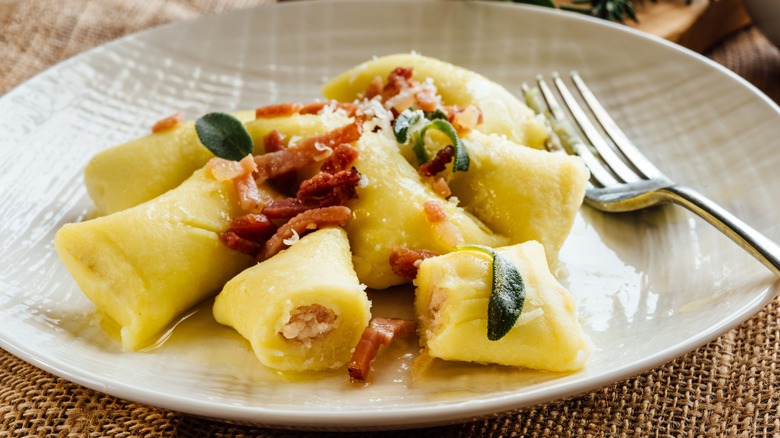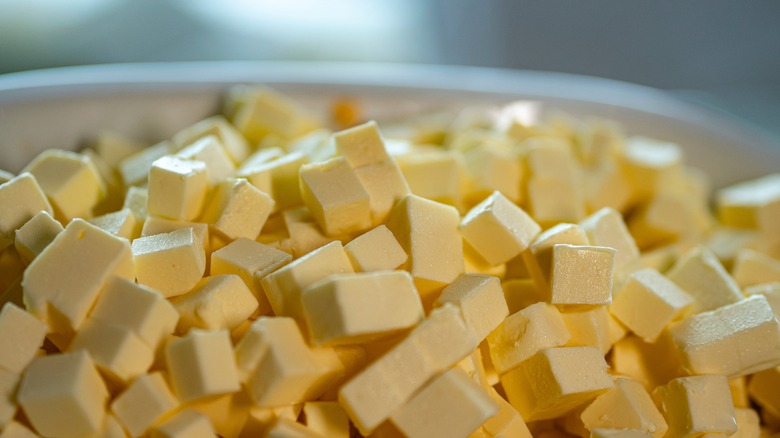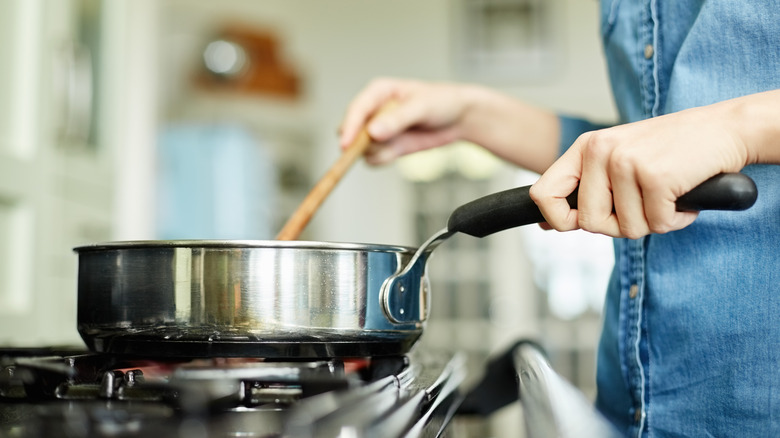The Secret Behind Luxurious Restaurant Soups And Sauces Is A Bit Of Butter
Anyone who has ever worked at a fine dining restaurant will attest to the fact that butter is a VIP in that world, used lavishly and liberally on almost everything that leaves the kitchen. For the customer, dining and relaxing at their cloth-covered table with candlelight and flowers, the illusion is that restaurant food tastes so much better than their own food at home simply because of the chef's skill, or the quality of ingredients they have available to work with. But while chef chops are definitely part of the picture — and yes, good restaurants do use good quality ingredients — don't underestimate the flavorful impact that cooking with butter has on the taste and texture of your food; there's nothing else like it.
In the culinary world, finishing a sauce with butter is a technique known as monter au beurre. This French term translates to "mount with butter." The technique is easy to replicate at home by simply swirling a small quantity of cold butter into your sauce as the finishing touch, off the heat. It will give your sauce a smooth texture and more body, a glossy appearance, and a rich depth of flavor.
The monter au beurre technique
Monter au beurre will give you luxurious restaurant-quality gravies, soups, and sauces; those you'd expect to find butter in, as well as those you might not. A hoisin, ponzu, and sriracha sauce destined for an Asian-style chicken dish, for example, might seem complete as it is. But the addition of cold butter to finish off this type of sauce makes all the difference.
The secret to using this technique successfully is to use very cold butter and to add it after taking the sauce off the heat source. Prep in advance by cutting some butter into small cubes, placing them in the freezer to keep cool. (Warm butter will melt into the sauce too quickly, and will not create the desired effect.) Make the sauce, and remove the pan from its heat source. Take the butter from the freezer and either gently whisk it into the sauce, one cube at a time, stirring until it disappears, or place the sauce in its pan on a dish towel, adding the butter and then gently swirling the pan in circles on top of the dish towel to create movement that melts the butter. You'll feel the sauce thickening slightly, and see it acquiring a shine.
Avoiding the pitfalls
The meeting of cold butter with warm sauce and the whisking or swirling involved creates an emulsion, which can be a delicate thing. If you're not serving the sauce immediately, keep it warm by placing it over a pan of gently simmering water (a bain-marie). Don't let the sauce touch the hot water. An occasional shake of the pan will help prevent any skin from forming on the surface.
Any leftover sauce that has been made using a beurre monter finish should be covered and stored in the refrigerator, where it will keep for several days.
To reheat an emulsified sauce that has been refrigerated, take it slow and easy. If a sauce prepared in this way is reheated too quickly, it's likely to split (separate). The best way to prevent that from happening is to reheat the sauce gently, using the bain-marie method, and never use a microwave. If you reheat the sauce the conventional way in a saucepan, and the sauce does separate, you can try removing the pan from the heat, adding a few pieces of cold butter, and whisking again. This should bring the temperature of the sauce down and bring it back together, but too much butter will alter the flavor balance and turn it into a butter sauce, which isn't the effect you're after.


